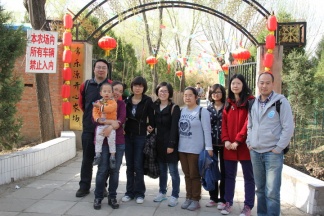Difference between revisions of "Research underconstruction"
From atmoschem
(→Secondary organic aerosols (SOA)) |
(→Secondary organic aerosols (SOA)) |
||
| Line 46: | Line 46: | ||
}} | }} | ||
{{Box|type=l_red_light|text=Organic matter to organic carbon mass ratio in Chinese urban aerosols | {{Box|type=l_red_light|text=Organic matter to organic carbon mass ratio in Chinese urban aerosols | ||
| + | |||
{{HideProject| | {{HideProject| | ||
Publication: Xing et al. (2013) | Publication: Xing et al. (2013) | ||
| + | aaaaaaaaaaaaaaaaaaaaaaaaaaaaaaaaaaaaaaaaaaaaaaaaaaaaaaaaaaaaaaaaaaaaaaaaaaaaaaaaaaaaaaaaaaaaaaaaaaaaaaaaaaaaaaaaaaaaaaaaaaaaaaaaaaaaaaaaaaaaaaaaaaaaaaaa | ||
| + | |||
| + | aaaaaaaaaaaaaaaaaaaaaaaaaaaaaaaaaaaaaaaaaaaaaaaaaaaaaaaaaaaaaaaaaaaaaaaaaaaaaaaaaaaaaaaaaaaaaaaaaaaaaaaaaaaaaaaaaaaaaaaaaaaaaaaaaaaaaaaaaaaaaaaaaaaaaaaa | ||
| + | |||
| + | aaaaaaaaaaaaaaaaaaaaaaaaaaaaaaaaaaaaaaaaaaaaaaaaaaaaaaaaaaaaaaaaaaaaaaaaaaaaaaaaaaaaaaaaaaaaaaaaaaaaaaaaaaaaaaaaaaaaaaaaaaaaaaaaaaaaaaaaaaaaaaaaaaaaaaaa | ||
| + | |||
}} | }} | ||
}} | }} | ||
Revision as of 10:07, 26 April 2014
Contents
- 1 Sources of Chinese air pollutants
- 2 Volatile organic compounds (VOCs): global and regional emissions and impacts
- 3 Secondary organic aerosols (SOA)
- 4 Chemistry-Climate interactions and Chemistry-Climate Model (CCM) development
- 5 Measurements of Chinese PM2.5 composition
- 6 Air-sea exchange of organic materials
- 7 Long-range transport of pollutants
Sources of Chinese air pollutants
Team members: Nan LI, Yue JIAN, Heng TIAN, Hansen CAO, Tzung-May FU
Publication: Fu et al. (2012)
Publication:
Volatile organic compounds (VOCs): global and regional emissions and impacts
Team members: Hansen CAO, Heng TIAN
Volatile organic compounds (VOC) impact the oxidizing power of the atmosphere and produce ozone and secondary organic aerosols. VOCs are emitted into the atmosphere from both natural and anthropogenic activities, and quantifying these many overlapping sources can be a challenge. We use remote sensing (satellite) and in situ observations to make 'top-down' estimates of VOC emissions from different sources.
Publication: Fu et al. [2007]
Publication: Millet et al. [2007], Palmer et al. [2006]
Secondary organic aerosols (SOA)
Team members: Nan LI, Li XING, Tzung-May FU
Secondary organic aerosols (SOA) are the organic mass transferred into the particulate phase in the atmosphere. Many recent observations have found SOA concentrations to be much higher than can be explained by current models in most parts of the atmosphere.
Using a global 3-D atmospheric chemistry model, we investigate the missing source of SOA. In particular, we find that the heteorogeneous uptake of dicarbonyls in aeorsols and clouds can help explained the observed SOA concentrations and variability.
Publication: Fu et al. (2012)
Publication: Li et al. (2013)
Publication: Xing et al. (2013) aaaaaaaaaaaaaaaaaaaaaaaaaaaaaaaaaaaaaaaaaaaaaaaaaaaaaaaaaaaaaaaaaaaaaaaaaaaaaaaaaaaaaaaaaaaaaaaaaaaaaaaaaaaaaaaaaaaaaaaaaaaaaaaaaaaaaaaaaaaaaaaaaaaaaaaa
aaaaaaaaaaaaaaaaaaaaaaaaaaaaaaaaaaaaaaaaaaaaaaaaaaaaaaaaaaaaaaaaaaaaaaaaaaaaaaaaaaaaaaaaaaaaaaaaaaaaaaaaaaaaaaaaaaaaaaaaaaaaaaaaaaaaaaaaaaaaaaaaaaaaaaaa
aaaaaaaaaaaaaaaaaaaaaaaaaaaaaaaaaaaaaaaaaaaaaaaaaaaaaaaaaaaaaaaaaaaaaaaaaaaaaaaaaaaaaaaaaaaaaaaaaaaaaaaaaaaaaaaaaaaaaaaaaaaaaaaaaaaaaaaaaaaaaaaaaaaaaaaa
Publication: Xing et al. (2013)
Chemistry-Climate interactions and Chemistry-Climate Model (CCM) development
Team members: Jinxuan CHEN, Yaping MA, Wanying KANG, Aoxing ZHANG, Ye QING
Publication:
Measurements of Chinese PM2.5 composition
Team members: Wei XU, Jinxuan CHEN, Heng TIAN, Aoxing ZHANG
Air-sea exchange of organic materials
Team members: Cenlin HE, Tzung-May FU
The ocean can act both as a source and a sink of atmospheric organic material. The air/sea exchange of organic materials is complexly regulated by both physical and biological conditions at the interface and poorly understood. We developed a new conceptual model to account for these physical and biological processes, including the presence of microfilms, production/consumption of organic matter by marine life, and other photochemical processes.
Publication: He and Fu (2013)
Long-range transport of pollutants
Team member: Yue JIAN
Publication: Jian and Fu (2014)

[ Open Urban]
Skin: GoMediaWiki free skin